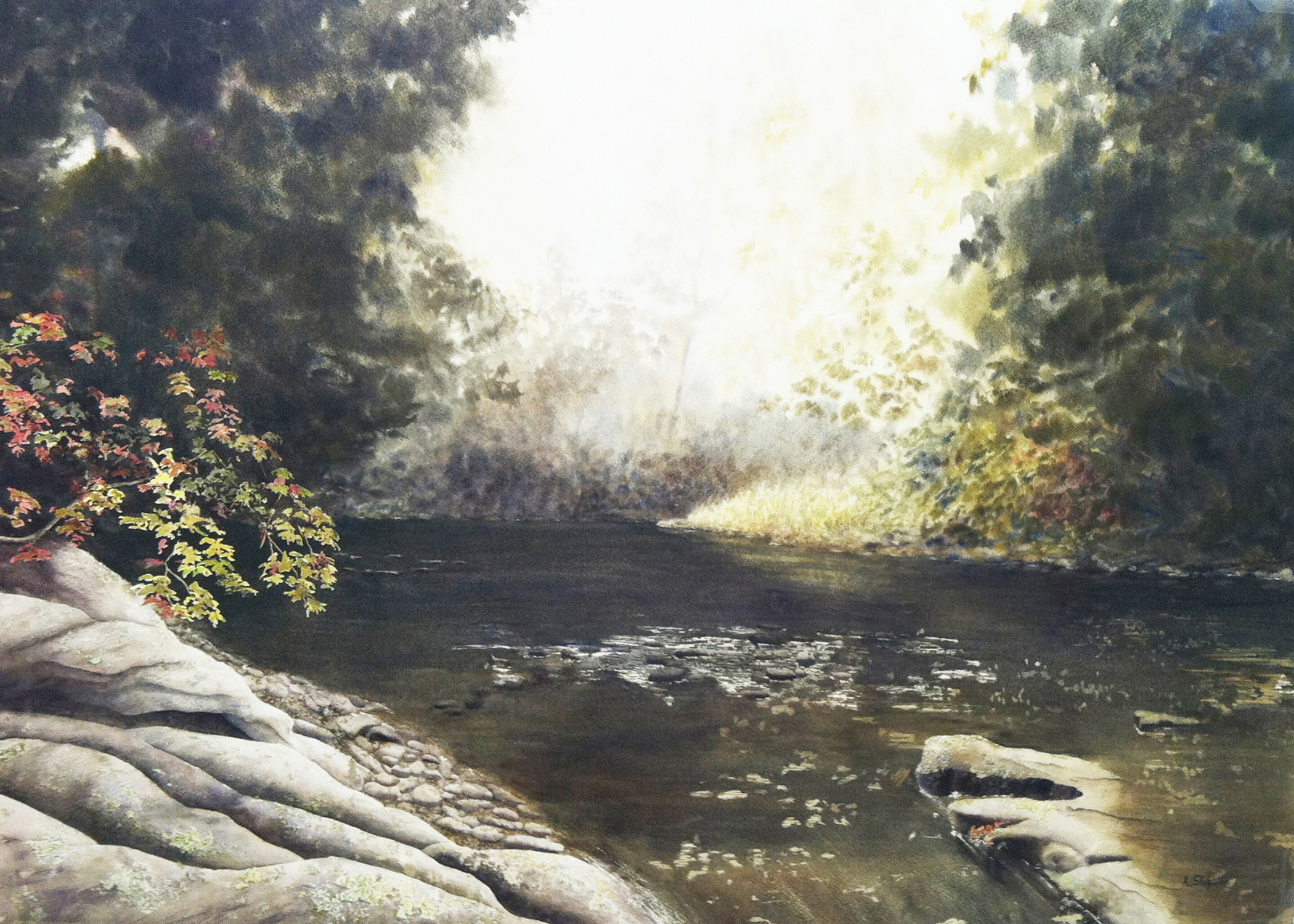Watercolorist Alan Shuptrine is taking on the biggest project of his career, one that will take him from North Georgia to Maine -- on foot.
He's hiking the Appalachian Trail and recording his journey with a series of 60 to 70 paintings in an art collection and a book he's calling "The Serpentine Chain."
The idea was spurred by "Jericho: The South Beheld," a project of his late father, artist Hubert Shuptrine, and author James Dickey ("Deliverance"). Published in 1974, the book was a journey through the Southern U.S., blending Shuptrine's paintings and Dickey's words.
Alan Shuptrine, now 51, was a young boy when his father began working on the paintings in "Jericho."
"In essence my project, like my father's book about the dying South, is about coming home. Eventually I want to be in collaboration with a New York Times bestselling author like my father did with Dickey in 'Jericho' -- getting together two passionate artists on one topic they are passionate about -- the South."
The debut of "The Serpentine Chain" will be an exhibit in a yet-to-be-announced city in November 2016, he says.
The idea to do the 2 1/2-year project, which includes hiking the 2,168-mile trail, came to him about two years ago in the middle of the night.
"I sat up in bed and asked myself that, since I'm a painter and I love the mountains, why am I not painting the mountains?" he recalls.
"My dream is to create an entire series of paintings about the Appalachian Mountains and the people and the land along the way. I want to help celebrate the historical and cultural connections between these mountain people and their Celtic brethren across the pond," he says.
Although he lived in more than 20 cities while growing up, mostly in the South, Shuptrine has loved the Appalachian Mountains throughout his life.
"My family was never rooted anywhere because my father moved us around from place to place to chase the light," he says. "But the common factor in all the places we lived was that we lived very close to the Appalachian Mountains."
Shuptrine says the Serpentine Chain name is a reference to minerals found in Springer Mountain, Ga., where the trail begins.
"There is a mineral that starts there called serpentine. It's dark green in color. This seam of serpentine follows underneath your feet and forms a subterranean trail throughout the length of the Appalachian Trial," Shuptrine says. "Sometimes it's four inches under your feet and sometimes it's half-mile deep. When the trail ends, the serpentine stops."
The only other place in the world where serpentine is found is in Great Britain, he says.
"Millions of years ago, the continents were joined together and what we now know as Great Britain was connected to the Eastern Seaboard. We shared the same Appalachian Mountains. Because of the continental drift, Europe pulled away and severed our Appalachian Mountains and took half of the serpentine. For centuries, the people of Great Britain have cherished serpentine, just as we've done for centuries.
"When the 18th century settlers moved over here, they didn't feel comfortable so they kept moving westward. When they finally got to Appalachians, it felt familiar -- like home so they settled there. Unbeknownst to them, they were settling in the same mountains they left an ocean away."
The end result of connecting these dots of history will be his finished art pro-ject. Since he wants to capture the beauty of the mountains and the people who live there, the only way to do it accurately is to experience it himself, he says.
"I'm not in the best of shape, but I've been training for a long time. I'm not out to set any records because I'm going to be a section hiker," he explains.
He'll hike about four or five days at a time then come back to his studio on Lookout Mountain and paint for a couple of weeks before heading back to the mountains.
Shuptrine has designed two quivers that will attach to his backpack to house art supplies and a lightweight easel so he can create his paintings along the trail.
"It's important that I cover the entire trail and all four seasons of the year. This winter I'm hiking northward, so I'll be hiking into deep snow," he says. "I will get some beautiful snow scenes. I want to hike into all the little villages and hamlets along the way."
Contact Karen Nazor Hill at khill@timesfreepress.com or 423-757-6396.

